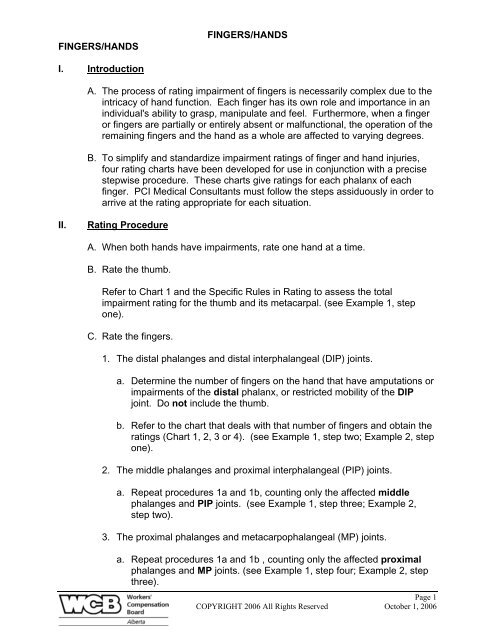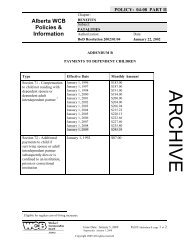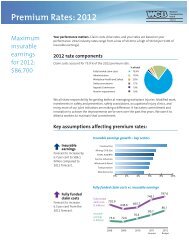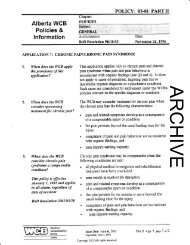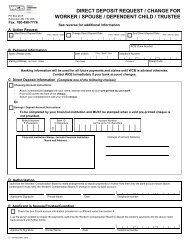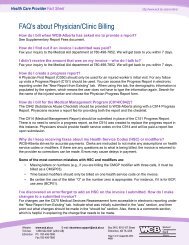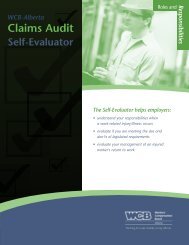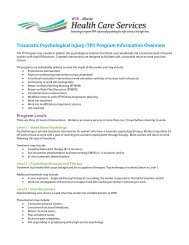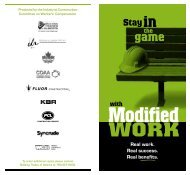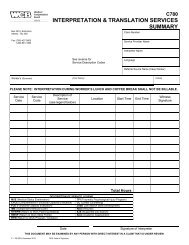ALBERTA PERMANENT CLINICAL IMPAIRMENT GUIDE - Workers ...
ALBERTA PERMANENT CLINICAL IMPAIRMENT GUIDE - Workers ...
ALBERTA PERMANENT CLINICAL IMPAIRMENT GUIDE - Workers ...
You also want an ePaper? Increase the reach of your titles
YUMPU automatically turns print PDFs into web optimized ePapers that Google loves.
FINGERS/HANDSFINGERS/HANDSI. IntroductionA. The process of rating impairment of fingers is necessarily complex due to theintricacy of hand function. Each finger has its own role and importance in anindividual's ability to grasp, manipulate and feel. Furthermore, when a fingeror fingers are partially or entirely absent or malfunctional, the operation of theremaining fingers and the hand as a whole are affected to varying degrees.B. To simplify and standardize impairment ratings of finger and hand injuries,four rating charts have been developed for use in conjunction with a precisestepwise procedure. These charts give ratings for each phalanx of eachfinger. PCI Medical Consultants must follow the steps assiduously in order toarrive at the rating appropriate for each situation.II.Rating ProcedureA. When both hands have impairments, rate one hand at a time.B. Rate the thumb.Refer to Chart 1 and the Specific Rules in Rating to assess the totalimpairment rating for the thumb and its metacarpal. (see Example 1, stepone).C. Rate the fingers.1. The distal phalanges and distal interphalangeal (DIP) joints.a. Determine the number of fingers on the hand that have amputations orimpairments of the distal phalanx, or restricted mobility of the DIPjoint. Do not include the thumb.b. Refer to the chart that deals with that number of fingers and obtain theratings (Chart 1, 2, 3 or 4). (see Example 1, step two; Example 2, stepone).2. The middle phalanges and proximal interphalangeal (PIP) joints.a. Repeat procedures 1a and 1b, counting only the affected middlephalanges and PIP joints. (see Example 1, step three; Example 2,step two).3. The proximal phalanges and metacarpophalangeal (MP) joints.a. Repeat procedures 1a and 1b , counting only the affected proximalphalanges and MP joints. (see Example 1, step four; Example 2, stepthree).Page 1COPYRIGHT 2006 All Rights Reserved October 1, 2006


